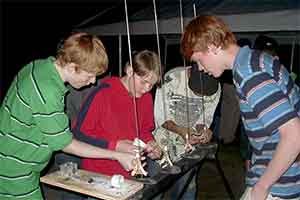Club Membership in Teens Linked to Lower Mortality in Older Age

 Did you belong to community, sports, or other clubs in your teens? If so, you might be more likely to survive into your late seventies, suggests a study in Psychosomatic Medicine: Journal of Biobehavioral Medicine, the official journal of the American Psychosomatic Society.
Did you belong to community, sports, or other clubs in your teens? If so, you might be more likely to survive into your late seventies, suggests a study in Psychosomatic Medicine: Journal of Biobehavioral Medicine, the official journal of the American Psychosomatic Society.
People who were club members at age 18 are at lower risk of death by age 78, according to the report by Ian Deary, PhD, and colleagues of University of Edinburgh. The study adds to a growing body of evidence suggesting that social participation throughout life contributes to health and longevity.
Want to Increase Your Life and Health? Join the Club…
The researchers analyzed data from a study called the “6-Day Sample of the Scottish Mental Survey 1947,” which followed a large group of Scottish men and women from 1947 to 2014—from early adolescence to old age. Among many other factors assessed over the years, the participants provided information on their attendance at various types of social clubs or organizations in 1954, when they were 18 years old.
Follow-up assessments were used to determine whether teenage club membership was related to mortality risk in older age. The analysis was adjusted for a wide range of other factors, including teacher ratings of personality at age 18, later educational attainment, and indicators of socioeconomic status (SES). Of 1,059 “traced and linked” participants, about 42 percent had died by 2014.
At age 18, about one-third of the participants reported taking part in club activities. Membership in youth or community clubs was most common, followed by church groups, sports clubs, and cultural, craft/hobby, or government service groups.
Club membership was more common for men than women. Club members also had higher parental SES, better school attendance, and were rated higher by their teacher on the personality trait of dependability. By age 26, they had higher social attainment than non-club members.
In 2014, 47 percent of club members were still alive, compared to 31 percent of non-club members. After adjustment for sex, club membership was associated with lower mortality risk. With further adjustment for intelligence, SES and other factors, the mortality reduction for club members remained significant.
Many studies have found that social participation in middle- and older-age is associated with lower mortality risk. However, this might be the result of “reverse causation”—poor health could be the cause of reduced social activity. This study overcomes the problem by using very long-term follow-up data including information on adolescent club membership as a measure of social participation.
The results suggest that social relationships in earlier life—not just older age—can be an important part of health interventions to protect longevity and well-being. Catherine M. Calvin, PhD, who led the analysis, writes: “While we feel it would be premature to propose health and/or educational policies that would encourage everyone to join a club per se,” the researchers conclude, “we would encourage social participation in general to feature more prominently in research on, and policy discussions surrounding, the promotion of population health and wellbeing.”
Dr. Deary, who led the project, comments, “Although we have highlighted club membership, here we also learned other things about factors in childhood that are related to living longer. For example, one of our analyses found that club membership, higher cognitive ability, more dependability in personality, and a more advantaged social background were all contributors to living longer.”
How does social participation lead to better health outcomes? The researchers suggest further studies to identify the “mediating mechanisms,” which may include psychological support from social networks, positive self-esteem from being a club member, and reductions in stress related to social contact.
Source Newsroom: Wolters Kluwer Health: Lippincott Williams and Wilkins
Citations
Psychosomatic Medicine
Article: “Childhood Club Participation and All-Cause Mortality in Adulthood: A 65-Year Follow-Up Study of a Population-Representative Sample in Scotland”

